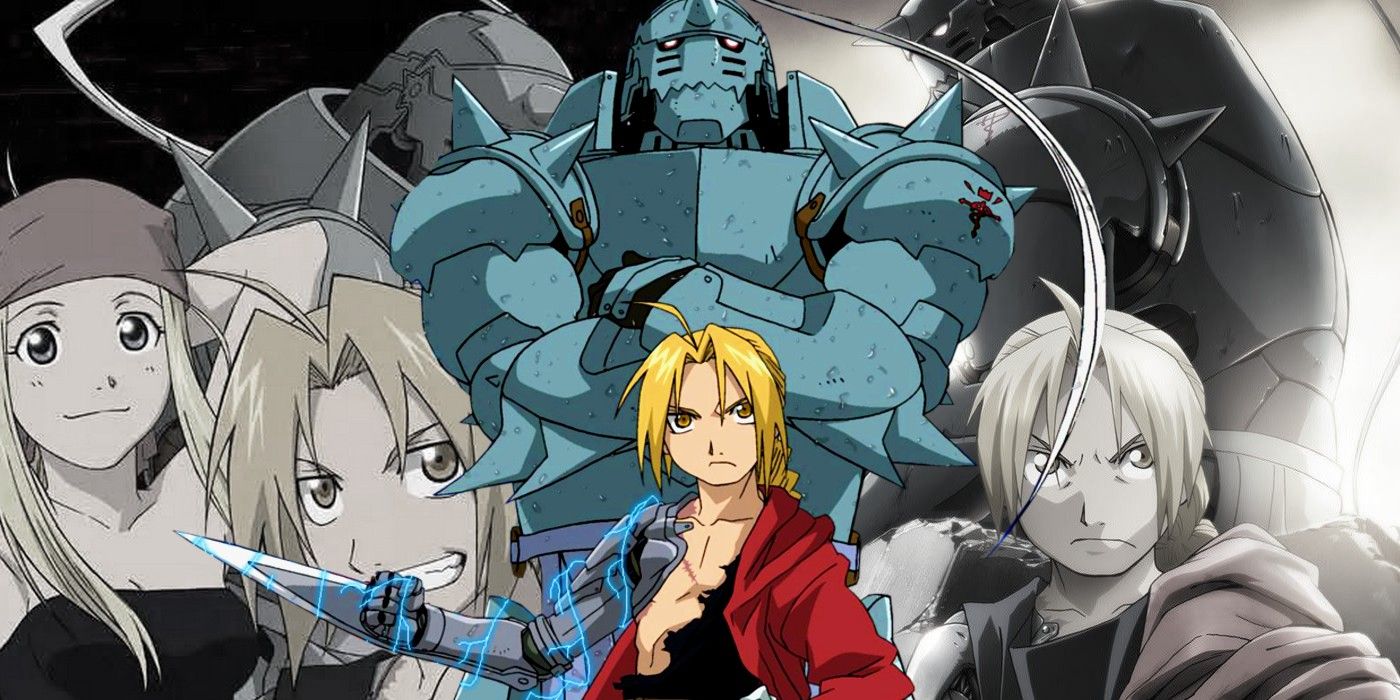
Here's how Fullmetal Alchemist and Fullmetal Alchemist: Brotherhood differ from each other. Created by Hiromu Arakawa, Fullmetal Alchemist is one of the most popular and successful manga series of all time and has been developed into animation, movies and live-action. While it's commonplace for a hit manga to be given the anime adaptation treatment, it's not standard practice for there to be two separate series based on exactly the same material. This is the situation fans find themselves in with Fullmetal Alchemist.
The original Fullmetal Alchemist anime began airing within a year of the manga's publication debut. Working to different schedules, Arakawa encouraged the anime to deviate from her own story and come up with something original. Unfortunately, anime originals often tend to be divisive, and so it proved with Fullmetal Alchemist, leading to the production of Fullmetal Alchemist: Brotherhood in 2009 which was more authentic to the manga.
Consequently, both versions of the anime begin in near-identical fashion. The backstory and goals of Edward and Alphonse Elric are the same, and most of the major settings and characters remain in place. Big plot points from the first act occur in both shows, and Arakawa's fictional universe works more or less by the same rules. But there's a point around the episode 30 mark where the 2003 Fullmetal Alchemist anime begins to diverge from the manga and begins to spin its own yarn. Brotherhood begins animating untouched material by episode 10, which means there are plenty of differences between the two versions.
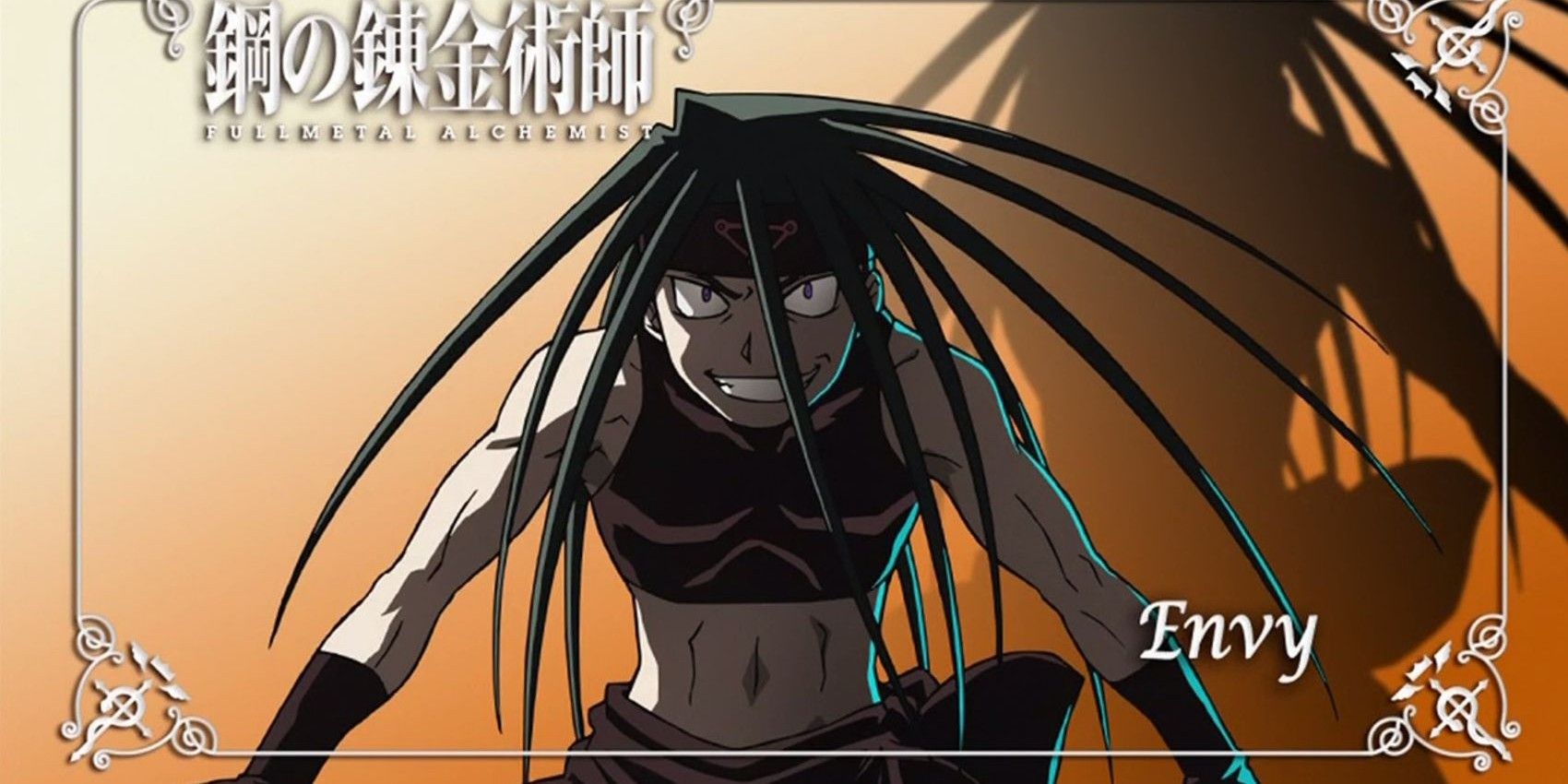
One of the biggest differences between Fullmetal Alchemist and Brotherhood lies in its villains. Both versions of the story feature the Homunculi as recurring enemies for the Elric brothers, and since these characters appear early, their basic function and overarching seven deadly sins theme remain consistent. However, the backstory of each Homunculus and their true nature are completely altered. In the initial 2003 anime series, each Homunculus is the unintended consequence of an alchemist attempting human transmutation - the "sins" of alchemy returning to haunt the creator. Lust was born when Scar's brother tried to resurrect his girlfriend, Sloth was the result of Ed and Al trying to bring back their mother, Wrath appeared from Izumi's failed transmutation, and Greed, Envy, Pride and Gluttony were all created by the series' arch-villain. In Brotherhood, the entire Homunculus origin changes - all of the creatures are simply made by the main villain, Father.
As well as their backstories, each Homunculus also experiences vastly different journeys in the 2003 series and Brotherhood. Sloth is a motherly woman in Fullmetal Alchemist, posing as the secretary to King Bradley who is revealed to be Pride. In Brotherhood, Sloth is merely a tunnel-digging monster, while Pride is King Bradley's son and the King himself is Wrath. Because of Lust's sympathetic origin story in the 2003 Fullmetal Alchemist anime, she aligns with the Elric brothers, but her death sends Gluttony into a state of depression. Brotherhood's Gluttony is actually Father's failed attempt at creating a Gate of Truth and the Homunculus ends up being killed by Pride. Where Ed defeats Greed in the original anime series, the Homunculus is captured and transferred into someone else in Brotherhood. As a by-product of the 2003 anime's Homunculus mythology, the remains of the transmuted humans act as a weakness to their respective villains.
Envy's story is one of the biggest changes. The Fullmetal Alchemist anime depicted this Homunculus as a serpent-like creation, who wanted to find its father through the Gate of Truth, but the final form of Brotherhood's Envy is a one-eyed blob who eventually takes its own life, consumed by its own jealousy.
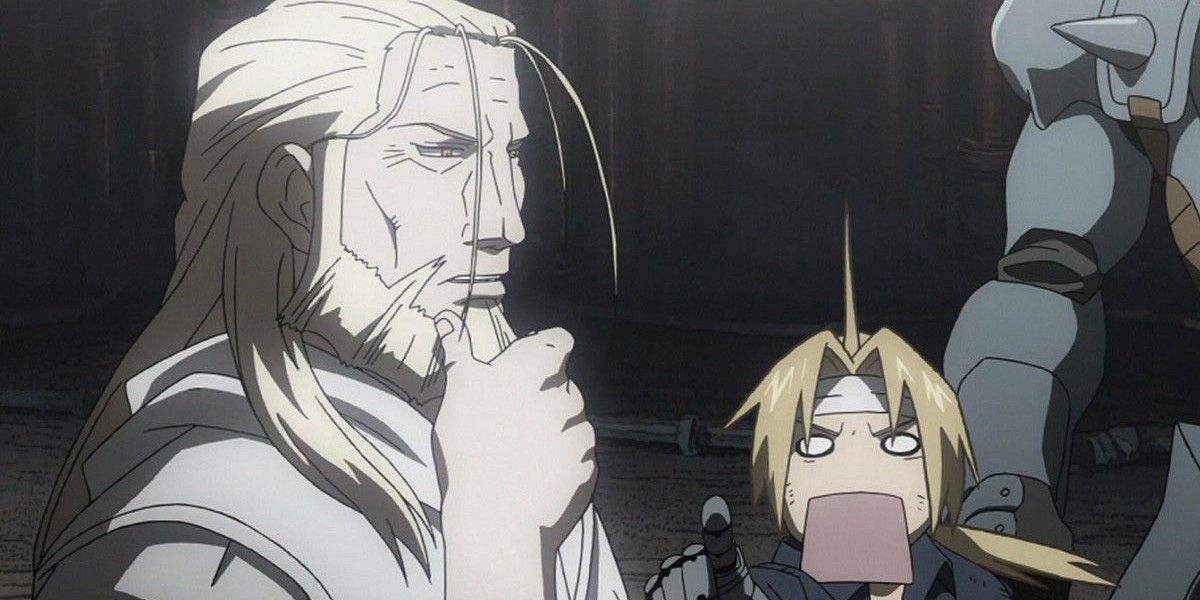
When the first Fullmetal Alchemist anime began to cover its own original material, the story had yet to reveal its true villain, so was forced into concocting a fresh antagonist - a mysterious woman called Dante. Centuries old, Dante was the lover of the Elric brothers' father, Hohenheim. The couple managed to continuously cheat death using philosopher's stones, but after Hohenheim dumped Dante for Trisha Elric, his ex resorted to using Homunculi as her minions, promising she could restore their human forms. After Dante's quest for eternal life is exposed, she's killed by her own servant, Gluttony, who she previously sent on a mindless eating rampage.
Dante doesn't exist in Brotherhood or the original manga, and the main villain is instead revealed to be Father - the original Homunculus. Similar to the 2003 anime but without the romance angle, Edward and Alphonse's dad is much older than he seems, and was once a slave to an alchemist who created Father based on Hohenheim's blood. Father took on a life of its own and conspired to ensure that the entire country of Xerxes would be sacrificed to provide him with a proper physical form. Thrown into the bargain, Hohenheim himself is made immortal, although he had no knowledge of the conspiracy and later devotes his life to defeating Father.
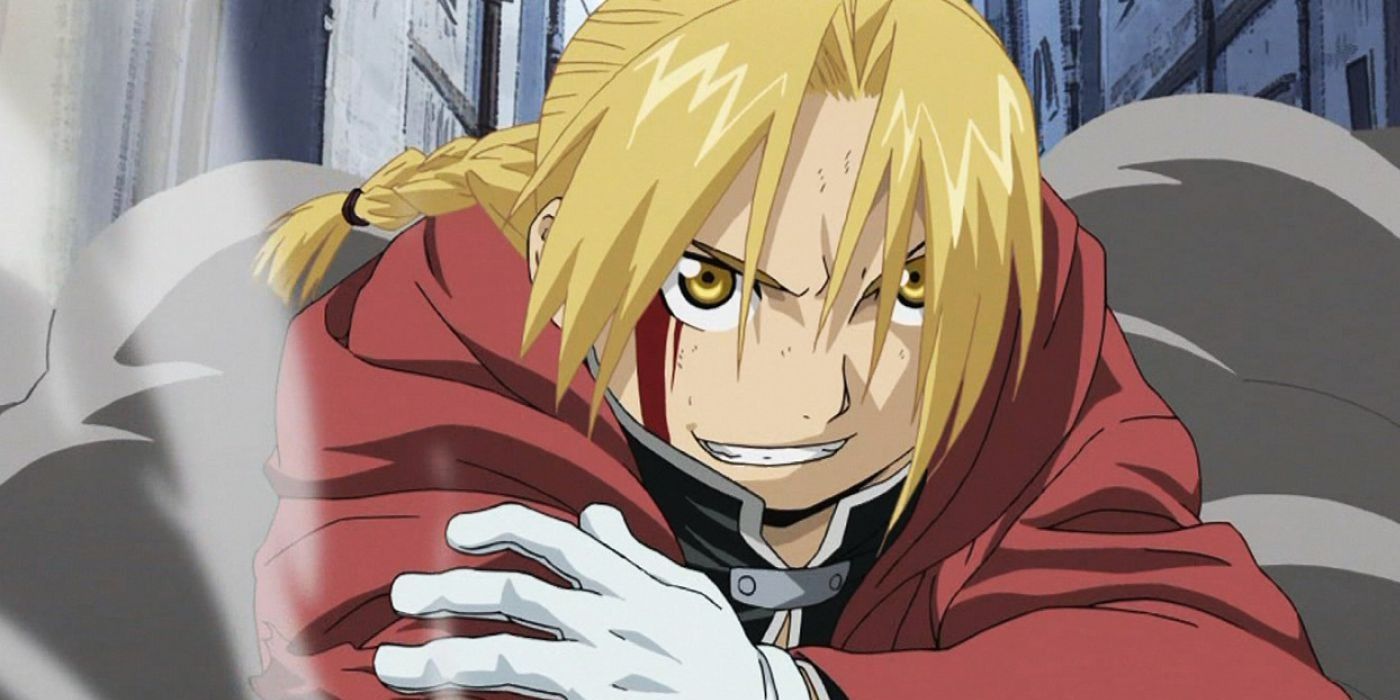
As the main protagonists of Fullmetal Alchemist, Edward and Alphonse Elric aren't substantially altered between the two anime series. The brothers' designs, personalities and motivations remain largely consistent, with most of the changes happening around them rather than to them. With that said, there are a few alterations to Ed and Al's personal stories and characterizations. For example, the State Alchemist exam is a proper exam in the earlier Fullmetal Alchemist anime. Ed trains for the occasion under Shou Tucker and then sits a proper test alongside other budding candidates. Ed's prodigal talent gets the better of the situation in Brotherhood - all the tiny alchemist does to attain his qualification is transmute a spear and threaten King Bradley with it.
The extent of the Elric brothers' abilities is also slightly altered between anime series. In the 2003 iteration, Ed is capable of performing alchemy without the need to draw a transmutation circle, making him one of the most talented in his field. Alphonse, on the other hand, still needs to draw regular transmutation circles, at least until he obtains the power of a philosopher's stone. In Brotherhood, however, both Elric brothers can perform circle-less alchemy thanks to their dabbling in human transmutation.
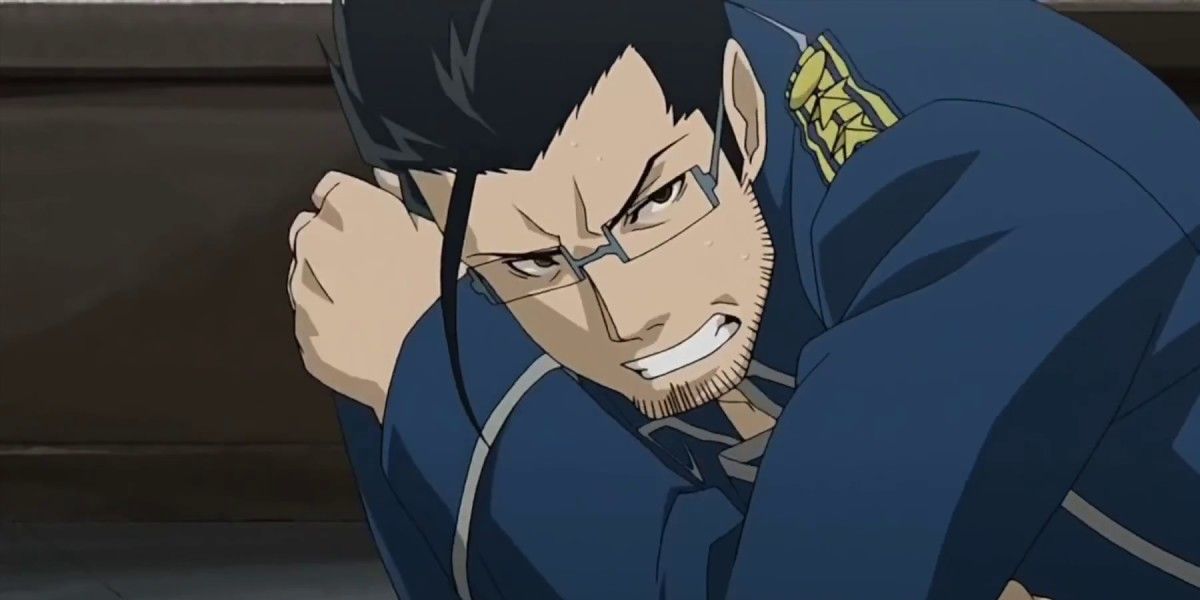
Although Ed and Al don't change significantly, plenty of other Fullmetal Alchemist characters do. Generally speaking, Brotherhood moves at a faster pace, despite having a higher episode count, which means that the 2003 anime series takes more time to explore certain figures. Edward and Alphonse's mother Trisha is a prime example, with far greater color to her character in the 2003 edition. In Brotherhood, Trisha is more of a plot device to get the Fullmetal Alchemist story rolling. In the same vein, the Elric brothers develop stronger bonds with Maes Hughes and his family than they do in Brotherhood, and even help deliver the man's child. After appearing early in the story, Rose is more important in the original anime, as Dante plans to use the girl as a brand new vessel.
Conversely, some Fullmetal Alchemist characters enjoy more significant roles in Brotherhood, most notably Riza, whose connection to Mustang is explored in more detail, and Tim Marcoh, who is killed by Gluttony in the first anime, but enjoys a much bigger role in Brotherhood.
Rather than being more prominent in one series than the other, some characters' stories are equally vital but markedly different. The man responsible for killing Winry's parents is revealed to be Roy Mustang in the 2003 Fullmetal Alchemist anime, but Scar committed the crime in Brotherhood. Meanwhile, Brotherhood sees Mustang go blind as a result of entering the Gate of Truth and a completely revamped story in invented for Scar. This shady character's first anime backstory involves an unnamed alchemist brother who replaces Scar's arm with a philosopher's stone. Redeeming himself somewhat, Scar dies to protect Alphonse. Brotherhood changes this, and Scar's powers instead come from combining alchemy with alkahestry. Scar also survives until the end of the story, helping overcome the Homunculi, and his personality is generally more focused.
Further altered characters include Shou Tucker, who becomes a chimera in the 2003 anime and tries to bring back his daughter Nina, who he previously merged with the family dog. Scar puts paid to any such redemption story in Brotherhood by redecorating the room with Tucker's innards.
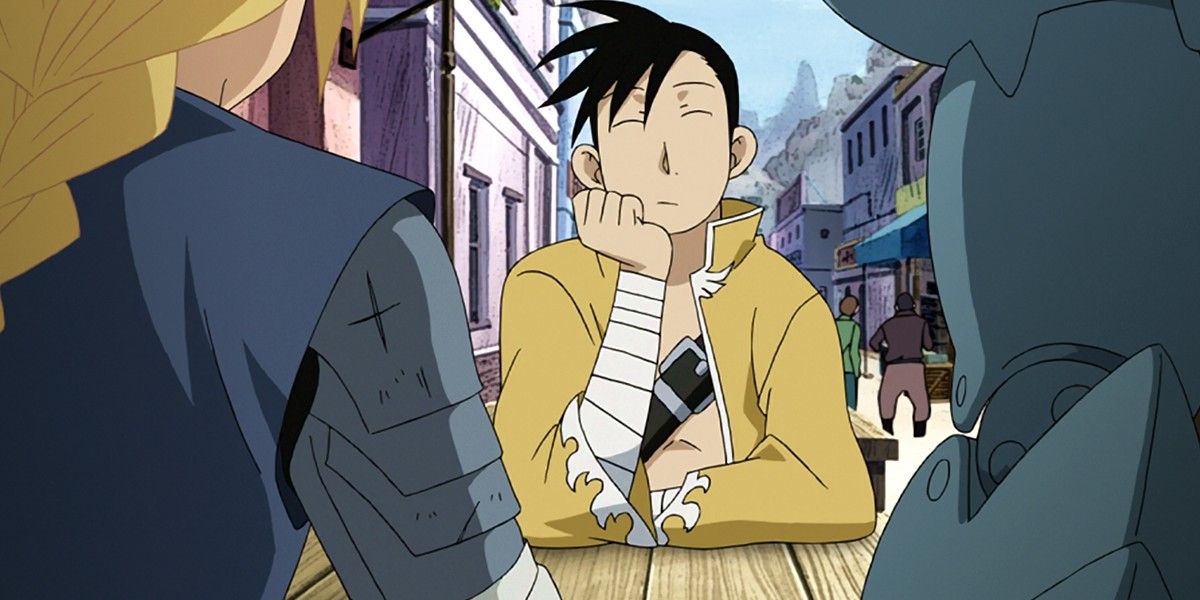
Because the Fullmetal Alchemist manga was still ongoing when the first anime aired, there are many additions to Arakawa's story that wouldn't make it into the 2003 series and vice versa. The TV-original material adds the Tringham brothers to the mix - a couple of young alchemists posing as Edward and Alphonse to access state resources and finish their father's research. Although this sub-plot doesn't feature in Brotherhood, it does derive from a spin-off novel. The first anime series also replaces Hughes with the decidedly less friendly Frank Archer. Elements of Arakawa's manga that featured solely in Brotherhood include the Briggs soldiers and the country of Drachma, as well as the Xing country and everyone associated with it. The ice alchemist Isaac McDougal is also exclusive to Brotherhood, but isn't from the original manga.
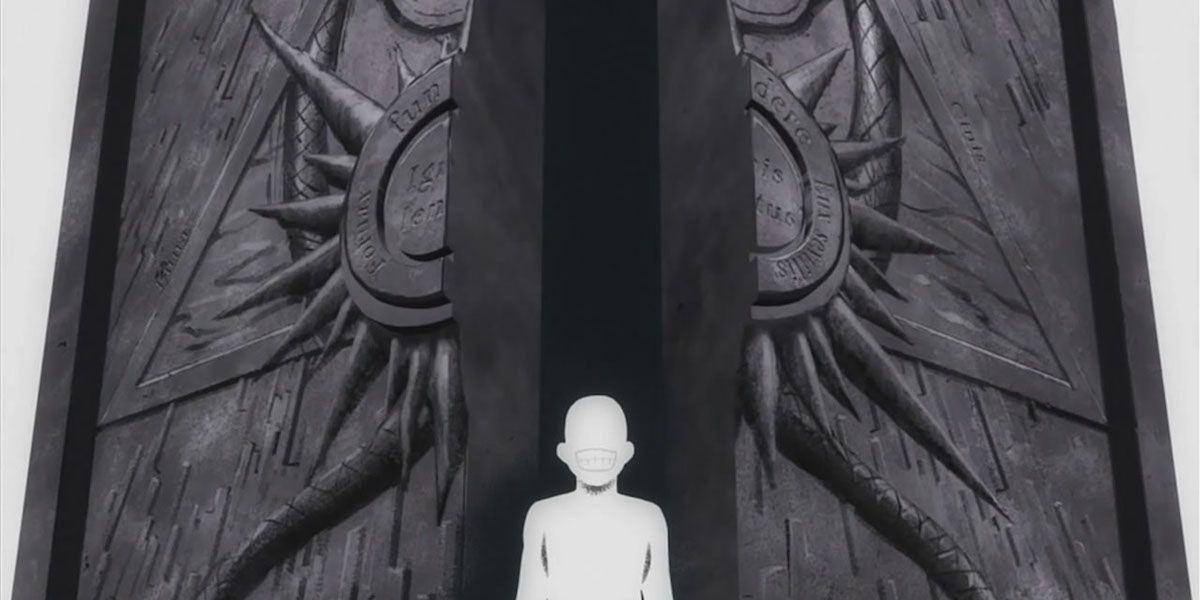
Given that the two Fullmetal Alchemist anime series take such contrasting paths, it's no surprise that they conclude in entirely different ways. For the first anime series, the Gate of Truth is revealed to be a portal to the "real" world, and alchemy is explained as energy created by deceased souls that pass through the gate. Edward enters the gate, submits his own life as equivalent exchange payment and restores his brother's body, trapping himself in 20th century Earth while Al and Winry remain on the other side. This tragic ending is expanded upon in the Conqueror of Shambala movie, in which Alphonse manages to reunite with his brother on Earth shortly before the outbreak of World War II. Not great timing.
None of this happens in Fullmetal Alchemist: Brotherhood. In a much happier ending, Ed only has to pay for the return of Al's body with his ability to perform alchemy, and this process also restores his own missing arm. Despite no longer being able to practice alchemy, Ed settles down and starts a family with Winry, living a peaceful life without being dragged through a portal and forced to worry about the looming shadow of Adolf Hitler.
from ScreenRant - Feed https://ift.tt/2YmufVV


0 Comments